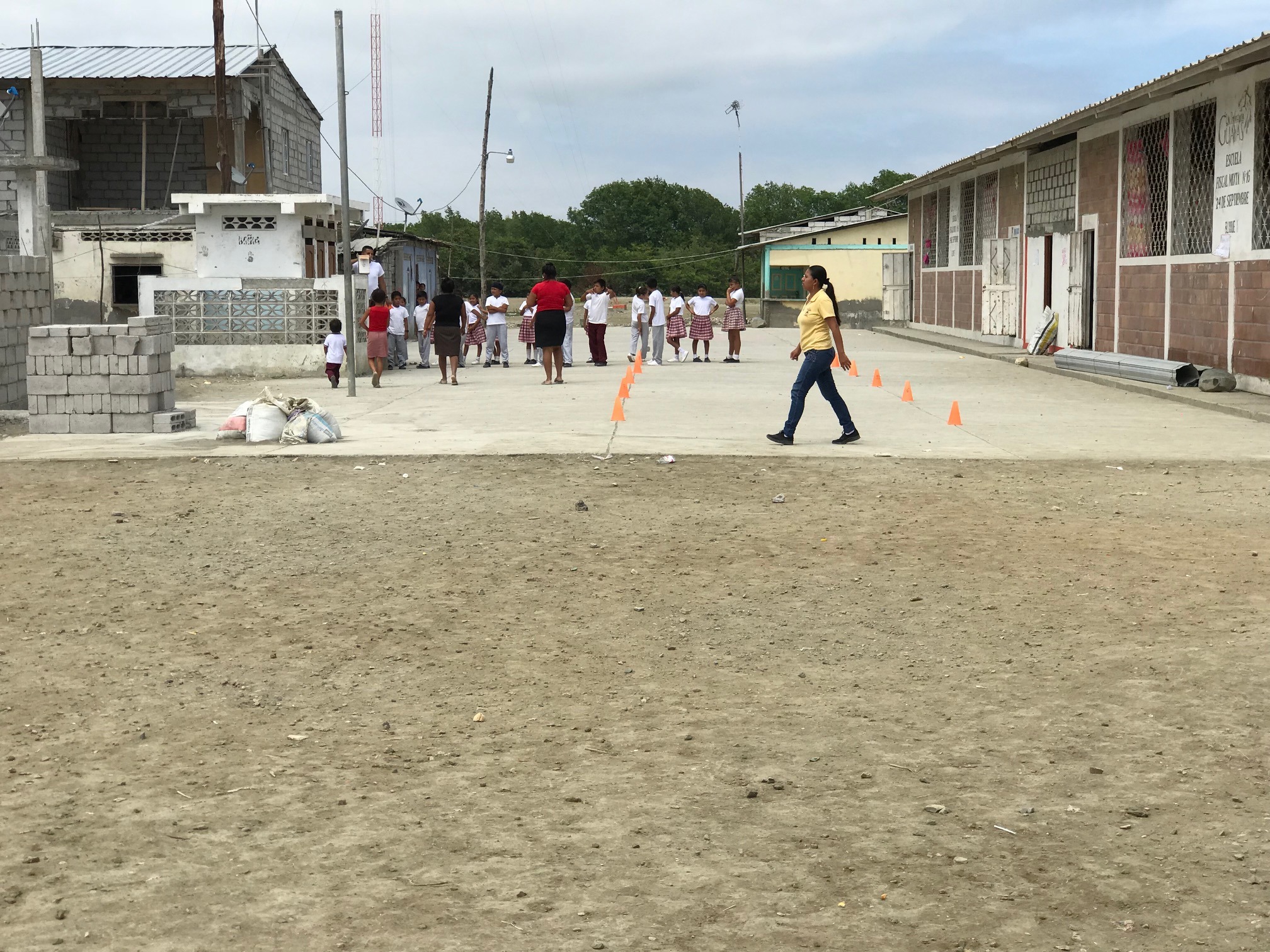Mangroves are part of the solution at COP24
Updating the Tanaloa Dialogue on the climate solution found in mangrove conservation and restoration
When a good idea strikes, or an attempt at something new proves successful, human instinct is to spread the word. Let's do that for mangroves and climate.
During a recent visit to the community of Bajo Negro in Ecuador, a place tucked in between mangroves and shrimp farms, I realized quite vividly that sharing stories with visitors is a pathway for locals to share their knowledge with the world. Now, to be transparent, we went there looking for stories to share with the world. But while the writer I traveled with sat and spoke to several generations of fishermen, I went for a walk around town. At the small medical clinic, the school yard, and in the village court yard, people were eager to share the relative mundanities of everyday life.

School yard, Bajo Negro, Ecuador. © WWF-US / Mike Crispino
After applauding the athletic skills of students in physical education class, I walked away feeling compelled to share these stories. Not as part of some grand campaign, just in my everyday life and interactions with colleagues, family and friends. And it reminded me that society is able to overcome its greatest challenges through dialogue, no matter how news gets from point “a” to point “b.”
Last year during the Climate Change Conference in Bonn, leaders launched the Talanoa Dialogue so that every person with an idea can contribute to the Paris Agreement process by sharing stories that foster well-informed decision-making. As another Climate Change Conference takes the stage, this time in Katowice, Poland, the Global Mangrove Alliance is contributing to the Talanoa Dialogue with five reasons why mangrove conservation and restoration is part of the climate solution.
ONE
Mangroves are an important sink and natural tool for climate mitigation. Many countries can demonstrate more ambitious efforts to address climate change by strengthening their NDCs with more information on mangrove restoration activities and related detailed mitigation targets in 2020.
TWO
Mangrove forests provide critical ecosystem services, such as coastal protection and food security. Enhancing ambition can also include strengthening the adaptation section of an NDC utilizing ecosystem-based adaptation in policies and plans.
THREE
Mangrove restoration is a win-win investment, providing mitigation and adaptation solutions to climate change while also supporting the implementation of other international pledges and agreements for the SDG Agenda 2030.
FOUR
There is an urgent need for coordinated partnerships that ensure good science, sound environmental policies and practices, and adequate funding in place for the enhancement, restoration and protection of natural climate solutions.
FIVE
“Natural climate solutions” can play a key role in achieving the goals of the Paris Agreement, and is a largely untapped area of mitigation potential in current NDCs.

Gulf of Guayaquil, Ecuador. © WWF-US / Mike Crispino
Governments around the world already recognize the value of mangroves in one form or another. In Ecuador, when clearing mangroves threatened biodiversity and habitats, the government offered concessions to locals, including people living in Bajo Negro—they take care of the mangroves and get to fish for species like crab.
Now, with scientists once again calling for all hands on deck to limit warming, governments have an opportunity to do better for their people and keep climate commitments by integrating mangroves into their toolbox of climate change solutions.